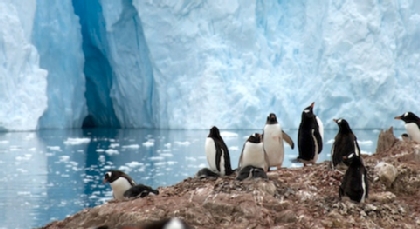Antarctica blog
We’ve been at sea for almost six days now.
In some senses, it seems strange we’ve been on the Ushuaia for that long, but on the other side, it feels like the usual happenings outside the world of icebergs, towering mountain islands, and the floating home that is our ship don’t actually exist at all.

“We’ve been at sea for almost six days now. In some senses, it seems strange we’ve been on the Ushuaia for that long, but on the other side, it feels like the usual happenings outside the world of icebergs, towering mountain islands, and the floating home that is our ship don’t actually exist at all.”
The routine each day is in danger of becoming just that – a routine. At 7:25 every morning, a crew member comes in the intercom. “Good morning, Antarcticans!” the voice pronounces before giving the weather report and a reminder that breakfast will be served in five minutes. We all (well, most of us), roll out of our bunk beds and sleepily head upstairs to the dining area for fruit, cereals, eggs, and bread. And coffee and tea, of course – quite popular for the college kids who prefer for the most part getting up at an hour with double, not single digits.
It is hard to choose things to talk about to highlight on a blog. Do I talk about the thing we expected to see and now have in our minds and memory card? Because we’ve seen four different types of penguins and their chicks. We’ve seen elephant, Weddell, crabeater, and leopard seals. Lots of terns, cormorants, skuas, petrals, and albatrosses. We’ve seen icebergs that would eclipse many houses, bursting with bright blue or green colors. We visited both Antarctica islands and the peninsula. And we’ve had fantastic luck seeing humpback whales – pretty much every day since we left the Drake Passage. We even have seen them bubble feeding (look it up, it’s cool) and from the water in Zodiacs. We’ve been cold, we’ve enjoyed the long summer days, and we’ve been seasick. We’ve explored our ship and climbed over rocks and snow on remote islands.
But it is the unexpected that is perhaps more interesting, the things we didn’t think about before we left. The sound of ice in the water crackling and popping for instance, or the soft squish squish of penguin feet on water or snow. Or the feelings of simply passing gigantic iceberg or glaciers. Or the smell of a penguin colony before to climb up to see it. The adrenaline rush when you hear a whale’s blowhole breathing and turning around to see the back of a humpback on the surface.
We make two landings a day on average, including Zodiac tours between icebergs and the one visit to Palmer Station, the smallest of the three U.S. American research stations on the continent. And we are constantly surrounded by rugged mountains stretching nearly straight up from where we can see them starting in the chilly water.
There are obviously too many experiences and emotions to rely in words here. It’s going to take a long time for us I think, to process this experience and that yes, we actually here in the land of ice, penguins, seals, and whales. For now we are appreciating the opportunity to just be here and are trying, even now, to remind ourselves that that biting wind watering our eyes is Antarctic wind and those cute birds hopping around on rocks and snow are the residents of this land.


